Posted on June 19th, 2011 by Mary Lord
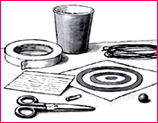 In this lesson, teams of students in grades 6 to 12 will explore the engineering design process by modifying a paper cup to carry a marble down a zip line and drop it precisely on a target. They will learn to brainstorm, test, evaluate, and redesign their devices to improve accuracy and effectiveness of the remote-release mechanism.
In this lesson, teams of students in grades 6 to 12 will explore the engineering design process by modifying a paper cup to carry a marble down a zip line and drop it precisely on a target. They will learn to brainstorm, test, evaluate, and redesign their devices to improve accuracy and effectiveness of the remote-release mechanism.
Read More
Filed under: Grades 6-8, Grades 9-12, Lesson Plans | 2 Comments »
Tags: Class Activities, Grades 6-8, Grades 9-12, Lesson Plan, Mechanical engineering, Physics, zip line
Posted on June 5th, 2011 by Mary Lord
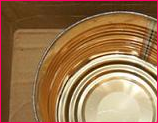 Student teams in grades 9-11 gain a better understanding of heat transfer and engineering by designing and building solar water-heating devices that mimic those used in residences. Once the model devices are constructed, students perform efficiency calculations and compare designs.
Student teams in grades 9-11 gain a better understanding of heat transfer and engineering by designing and building solar water-heating devices that mimic those used in residences. Once the model devices are constructed, students perform efficiency calculations and compare designs.
Read More
Filed under: Grades 6-8, Grades 9-12, Grades K-5, Lesson Plans | Comments Off on Lesson: Solar Water Heater
Tags: Energy and Environmental Technology, Environmental Engineering, Environmental science, Grades 9-12, Green, Green Technology, Lesson Plans, Solar Energy, Solar Engineering
Posted on April 17th, 2011 by ASEE
 In this lesson, students in grades 6-12 learn how to make a graph to measure average velocity and calculate the mid-times for personal intervals of student runs, walks, and jogs. Working in groups, one member walks, jogs, or runs in a straight-line path while attempting to maintain a constant velocity. The other group members time the runner along the path, and then record and graph the data of each run.
In this lesson, students in grades 6-12 learn how to make a graph to measure average velocity and calculate the mid-times for personal intervals of student runs, walks, and jogs. Working in groups, one member walks, jogs, or runs in a straight-line path while attempting to maintain a constant velocity. The other group members time the runner along the path, and then record and graph the data of each run.
Read More
Filed under: Grades 6-8, Grades 9-12, Lesson Plans | Comments Off on Lesson: Measuring Velocity
Tags: Class Activities, Grades 6-12, Lesson Plan, Mathematics
Posted on April 3rd, 2011 by Mary Lord
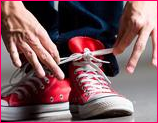 In this activity, students will explore how sensing is part of robotics by tying their shoes with different constraints. After lacing their shoes normally, try it wearing thick gloves or with popsicle sticks taped to fingers so they can’t bend. Can students tie their shoes now? A connection is made to the limitations of the motion of robots, and to the role of design in allowing robots to perform different functions.
In this activity, students will explore how sensing is part of robotics by tying their shoes with different constraints. After lacing their shoes normally, try it wearing thick gloves or with popsicle sticks taped to fingers so they can’t bend. Can students tie their shoes now? A connection is made to the limitations of the motion of robots, and to the role of design in allowing robots to perform different functions.
Read More
Filed under: Grades 6-8, Grades 9-12, Grades K-5, Lesson Plans | Comments Off on 1, 2, Robot Hands Please Tie My Shoe
Tags: Class Activities, Lesson Plan, Museums, Robotics, Science
Posted on March 25th, 2011 by Mary Lord
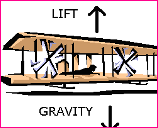 In this lesson, you’ll introduce your students to the four forces of flight — drag, lift, thrust, and weight — through a variety of fun flight experiments. Students will “fly” for short periods and then evaluate factors that might either increase or decrease their “flight” duration. They also will discover how air moving at different speeds over a wing keeps planes aloft.
In this lesson, you’ll introduce your students to the four forces of flight — drag, lift, thrust, and weight — through a variety of fun flight experiments. Students will “fly” for short periods and then evaluate factors that might either increase or decrease their “flight” duration. They also will discover how air moving at different speeds over a wing keeps planes aloft.
Read More
Filed under: Grades 6-8, Grades 9-12, Lesson Plans | 1 Comment »
Tags: Aerodynamics, Aeronautics, Aerospace, Lesson Plan, Lesson Plans
Posted on February 28th, 2011 by ASEE
In this project, students in grades 6-12 will recreate the remarkable measurement of the circumference of the earth first performed over 2,000 years ago. Using rulers, protractors, and meter sticks, students measure shadows cast by a stick on a day close to the equinox, then use that measurement in a simple equation to determine the circumference.
Read More
Filed under: Grades 6-8, Grades 9-12, Lesson Plans | 1 Comment »
Tags: Earth Science, Geometry, Mathematics
Posted on February 20th, 2011 by ASEE
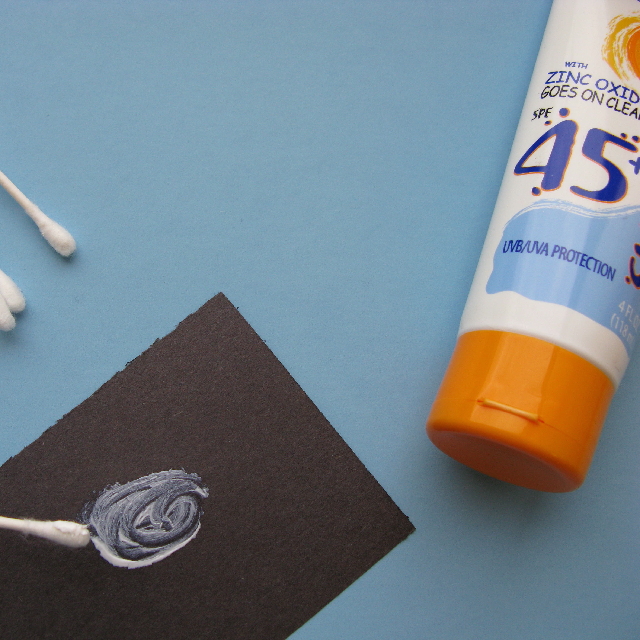 In this quick, hands-on lesson, students in grades K-12 compare sunblock containing nanoparticles to those that do not and learn how nanoparticles are used to help block harmful rays from the sun.
In this quick, hands-on lesson, students in grades K-12 compare sunblock containing nanoparticles to those that do not and learn how nanoparticles are used to help block harmful rays from the sun.
Read More
Filed under: Grades 6-8, Grades 9-12, Grades K-5, Lesson Plans | 1 Comment »
Tags: Grades K-12, Lesson Plan, Nanodays, Nanotechnology
Posted on February 6th, 2011 by ASEE
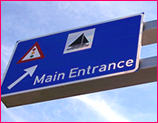 In this lesson, students in grades 6-12 use simple materials to design, build, and test a model of a free-standing structure used to support overhead road signs. They begin by learning about the engineering design process and researching about support structures. They then work in groups to design and build their own sign supports. The final designs are tested to see how they stand up to two different types of loads.
In this lesson, students in grades 6-12 use simple materials to design, build, and test a model of a free-standing structure used to support overhead road signs. They begin by learning about the engineering design process and researching about support structures. They then work in groups to design and build their own sign supports. The final designs are tested to see how they stand up to two different types of loads.
Read More
Filed under: Grades 6-8, Grades 9-12, Lesson Plans | 1 Comment »
Tags: Architectural, Civil Engineering, Engineering Design, Engineering Design Process, Grades 6-12, Lesson Plan, Transportation
Posted on January 23rd, 2011 by ASEE
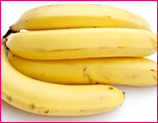 In this lab activity, students in grades 5 through 9 use a salt/detergent mixture to make a piece of a banana water soluble. Then they add cold ethanol to precipitate a froth of white DNA from the solution. With careful technique the slender threads are wound onto a glass rod for observation of deoxyribonucleic acid, the master code or blueprint of all organisms.
In this lab activity, students in grades 5 through 9 use a salt/detergent mixture to make a piece of a banana water soluble. Then they add cold ethanol to precipitate a froth of white DNA from the solution. With careful technique the slender threads are wound onto a glass rod for observation of deoxyribonucleic acid, the master code or blueprint of all organisms.
Read More
Filed under: Grades 6-8, Grades 9-12, Grades K-5, Lesson Plans | 1 Comment »
Tags: Bioscience, Lesson Plan, Science Experiments
 In this lesson, teams of students in grades 6 to 12 will explore the engineering design process by modifying a paper cup to carry a marble down a zip line and drop it precisely on a target. They will learn to brainstorm, test, evaluate, and redesign their devices to improve accuracy and effectiveness of the remote-release mechanism.
In this lesson, teams of students in grades 6 to 12 will explore the engineering design process by modifying a paper cup to carry a marble down a zip line and drop it precisely on a target. They will learn to brainstorm, test, evaluate, and redesign their devices to improve accuracy and effectiveness of the remote-release mechanism.








 Student teams in grades 9-11 gain a better understanding of heat transfer and engineering by designing and building solar water-heating devices that mimic those used in residences. Once the model devices are constructed, students perform efficiency calculations and compare designs.
Student teams in grades 9-11 gain a better understanding of heat transfer and engineering by designing and building solar water-heating devices that mimic those used in residences. Once the model devices are constructed, students perform efficiency calculations and compare designs. In this lesson, students in grades 6-12 learn how to make a graph to measure average velocity and calculate the mid-times for personal intervals of student runs, walks, and jogs. Working in groups, one member walks, jogs, or runs in a straight-line path while attempting to maintain a constant velocity. The other group members time the runner along the path, and then record and graph the data of each run.
In this lesson, students in grades 6-12 learn how to make a graph to measure average velocity and calculate the mid-times for personal intervals of student runs, walks, and jogs. Working in groups, one member walks, jogs, or runs in a straight-line path while attempting to maintain a constant velocity. The other group members time the runner along the path, and then record and graph the data of each run. In this activity, students will explore how sensing is part of robotics by tying their shoes with different constraints. After lacing their shoes normally, try it wearing thick gloves or with popsicle sticks taped to fingers so they can’t bend. Can students tie their shoes now? A connection is made to the limitations of the motion of robots, and to the role of design in allowing robots to perform different functions.
In this activity, students will explore how sensing is part of robotics by tying their shoes with different constraints. After lacing their shoes normally, try it wearing thick gloves or with popsicle sticks taped to fingers so they can’t bend. Can students tie their shoes now? A connection is made to the limitations of the motion of robots, and to the role of design in allowing robots to perform different functions. In this lesson, you’ll introduce your students to the four forces of flight — drag, lift, thrust, and weight — through a variety of fun flight experiments. Students will “fly” for short periods and then evaluate factors that might either increase or decrease their “flight” duration. They also will discover how air moving at different speeds over a wing keeps planes aloft.
In this lesson, you’ll introduce your students to the four forces of flight — drag, lift, thrust, and weight — through a variety of fun flight experiments. Students will “fly” for short periods and then evaluate factors that might either increase or decrease their “flight” duration. They also will discover how air moving at different speeds over a wing keeps planes aloft. In this quick, hands-on lesson, students in grades K-12 compare sunblock containing nanoparticles to those that do not and learn how nanoparticles are used to help block harmful rays from the sun.
In this quick, hands-on lesson, students in grades K-12 compare sunblock containing nanoparticles to those that do not and learn how nanoparticles are used to help block harmful rays from the sun. In this lesson, students in grades 6-12 use simple materials to design, build, and test a model of a free-standing structure used to support overhead road signs. They begin by learning about the engineering design process and researching about support structures. They then work in groups to design and build their own sign supports. The final designs are tested to see how they stand up to two different types of loads.
In this lesson, students in grades 6-12 use simple materials to design, build, and test a model of a free-standing structure used to support overhead road signs. They begin by learning about the engineering design process and researching about support structures. They then work in groups to design and build their own sign supports. The final designs are tested to see how they stand up to two different types of loads. In this lab activity, students in grades 5 through 9 use a salt/detergent mixture to make a piece of a banana water soluble. Then they add cold ethanol to precipitate a froth of white DNA from the solution. With careful technique the slender threads are wound onto a glass rod for observation of deoxyribonucleic acid, the master code or blueprint of all organisms.
In this lab activity, students in grades 5 through 9 use a salt/detergent mixture to make a piece of a banana water soluble. Then they add cold ethanol to precipitate a froth of white DNA from the solution. With careful technique the slender threads are wound onto a glass rod for observation of deoxyribonucleic acid, the master code or blueprint of all organisms.